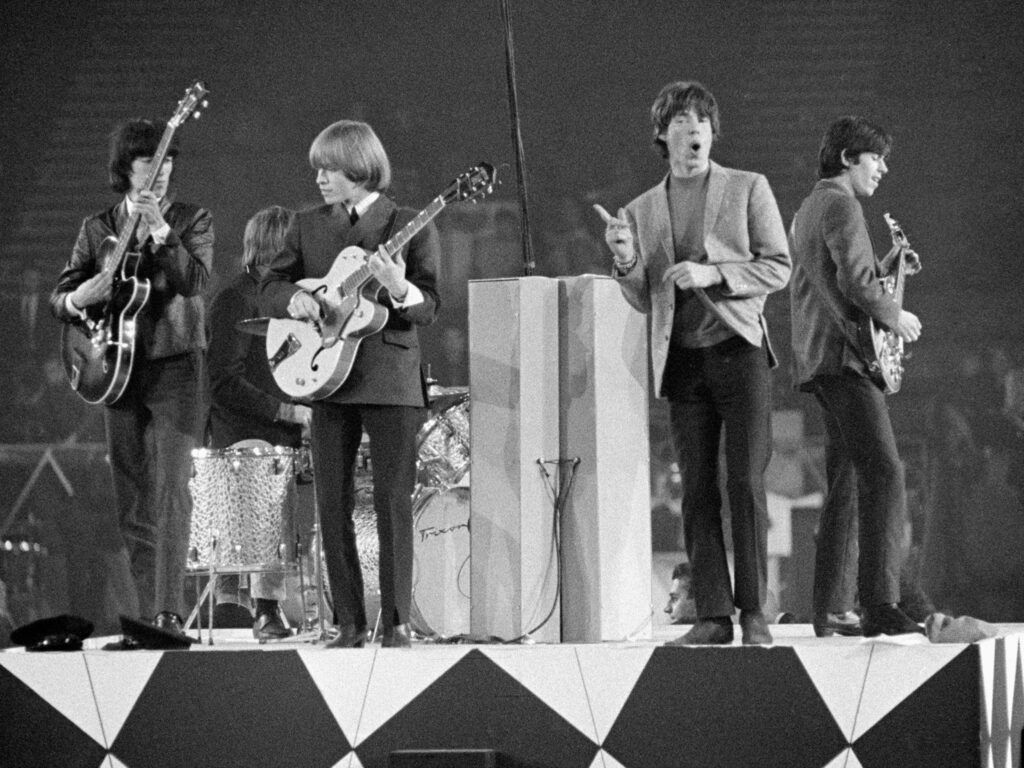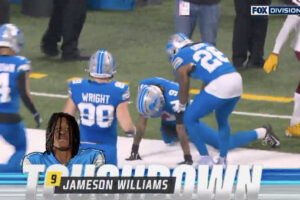
“The Rolling Stones’ Accidental Anthem: How a Sleep-Inspired Riff, Experimental Fuzz Effects, and Unfiltered Lyrics Combined to Create ‘(I Can’t Get No) Satisfaction,’ One of Rock’s Most Iconic Masterpieces”…
The Rolling Stones have created countless legendary songs, but few have a backstory as captivating as their 1965 anthem “(I Can’t Get No) Satisfaction.” This rock-and-roll masterpiece, often hailed as one of the greatest songs of all time, owes its existence to a blend of serendipity, experimentation, and the raw creative energy of a band on the rise. Its accidental inception and meteoric success underscore the unpredictable magic of music.
The Accidental Riff
Keith Richards, the band’s guitarist, is famously credited with creating the song’s iconic riff in his sleep. During the band’s U.S. tour in May 1965, Richards kept a cassette recorder by his bedside, a habit he maintained to capture fleeting moments of inspiration.
One morning, he woke to find a recording of himself playing a brief guitar riff followed by the sound of him dropping his pick and then 40 minutes of snoring. That riff, raw and unpolished, would become the foundation of “(I Can’t Get No) Satisfaction.”
Initially, Richards didn’t think much of the riff. In his mind, it was a placeholder for a horn section that he envisioned for the song. However, the rest of the band, particularly Mick Jagger and their manager Andrew Loog Oldham, immediately saw its potential.
Despite Richards’ skepticism, the band decided to build the song around the riff, leaving the horns out and preserving the rawness that would define its sound.
Lyrics Born of Frustration
While the riff came by accident, the song’s lyrics were deliberate and sharp. Mick Jagger wrote them poolside at a hotel in Clearwater, Florida, shortly before the recording sessions.
The lyrics captured the frustrations of modern life, particularly the sense of disillusionment with consumerism and societal expectations. Lines like “When I’m watchin’ my TV / And a man comes on and tells me how white my shirts can be” resonated with a generation increasingly skeptical of authority and conformity.
Jagger’s words were bold, unfiltered, and unapologetically rebellious. The refrain “I can’t get no satisfaction” was both a personal lament and a universal cry of discontent.
It tapped into the growing countercultural movement of the 1960s, making the song not just a hit but an anthem for a generation.
The Recording Process
The Stones recorded two versions of the song. The first was at Chess Studios in Chicago on May 10, 1965, featuring Brian Jones on harmonica. However, this version didn’t capture the energy they wanted.Two days later, they recorded the final version at RCA Studios in Hollywood.
This session introduced the Maestro Fuzz-Tone, a guitar effects pedal that gave the riff its distinctive, buzzing sound. Richards had brought the pedal along as an experiment, intending it to be a temporary feature, but its effect was transformative.
The fuzz-drenched riff became the song’s defining characteristic. Although Richards initially wanted to replace it with a horn section, the rest of the band convinced him to keep it.
This decision was pivotal, as the fuzz tone not only gave the song its signature sound but also helped popularize the use of distortion in rock music.
Cultural Impact and Success
When “(I Can’t Get No) Satisfaction” was released in the United States in June 1965, it became an instant sensation. The song topped the Billboard Hot 100 for four weeks and quickly spread across the globe. Its success marked a turning point for The Rolling Stones, elevating them from rising stars to rock-and-roll legends.
The song’s themes of rebellion and dissatisfaction struck a chord with listeners. It captured the zeitgeist of the 1960s, a decade defined by social upheaval, cultural revolution, and a questioning of traditional values.
Young people, in particular, connected with the song’s raw energy and its defiance of societal norms. It wasn’t just music; it was a statement.
Legacy
Today, “(I Can’t Get No) Satisfaction” is widely regarded as one of the greatest songs of all time. It has been covered by countless artists, featured in films and commercials, and remains a staple of The Rolling Stones’ live performances. Rolling Stone magazine ranked it #2 on their list of the “500 Greatest Songs of All Time,” second only to Bob Dylan’s “Like a Rolling Stone.”
The song’s accidental creation has become a legend in its own right. It serves as a reminder that creativity often thrives in unexpected moments and that sometimes, the best ideas come when least expected. Keith Richards’ sleepy riff, Mick Jagger’s incisive lyrics, and the band’s willingness to embrace experimentation all combined to create a track that transcends time.
“(I Can’t Get No) Satisfaction” is more than just a song; it’s a cultural milestone. Its accidental genesis, coupled with its powerful lyrics and groundbreaking sound, encapsulates the spirit of rock and roll.
Decades after its release, it continues to inspire musicians and listeners alike, proving that sometimes, the most extraordinary creations are the ones that “just happen by accident.”







